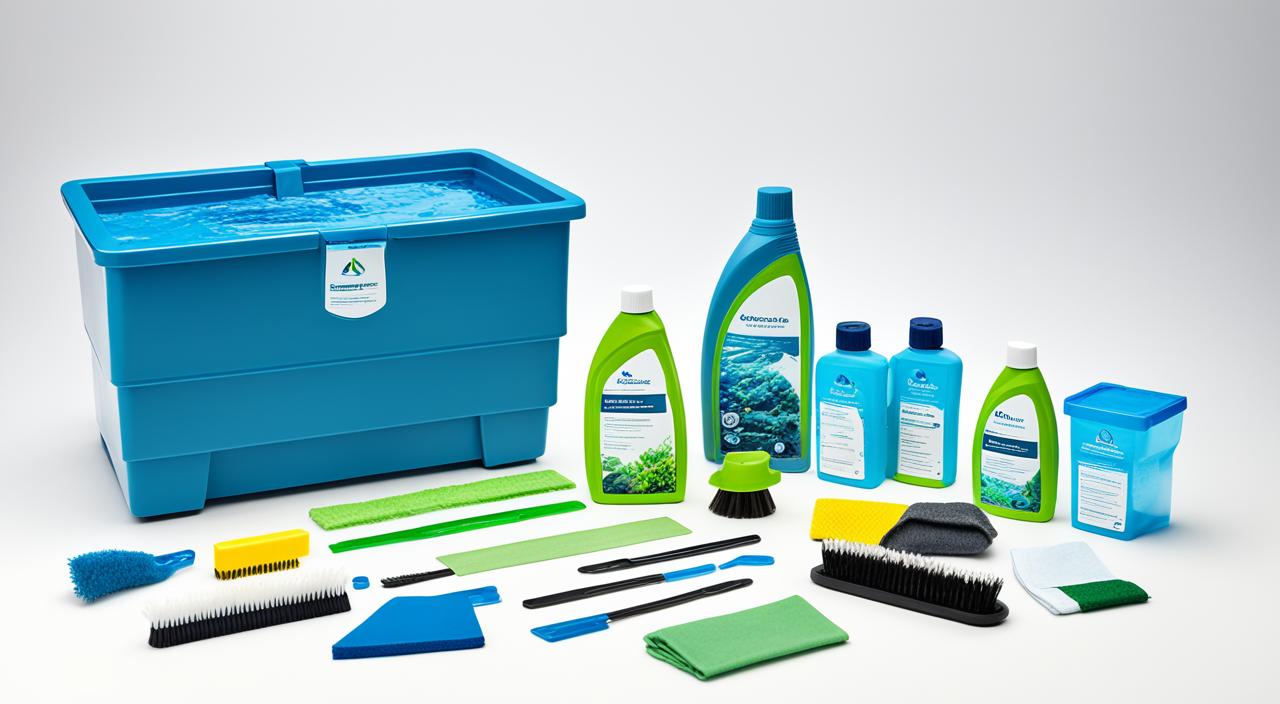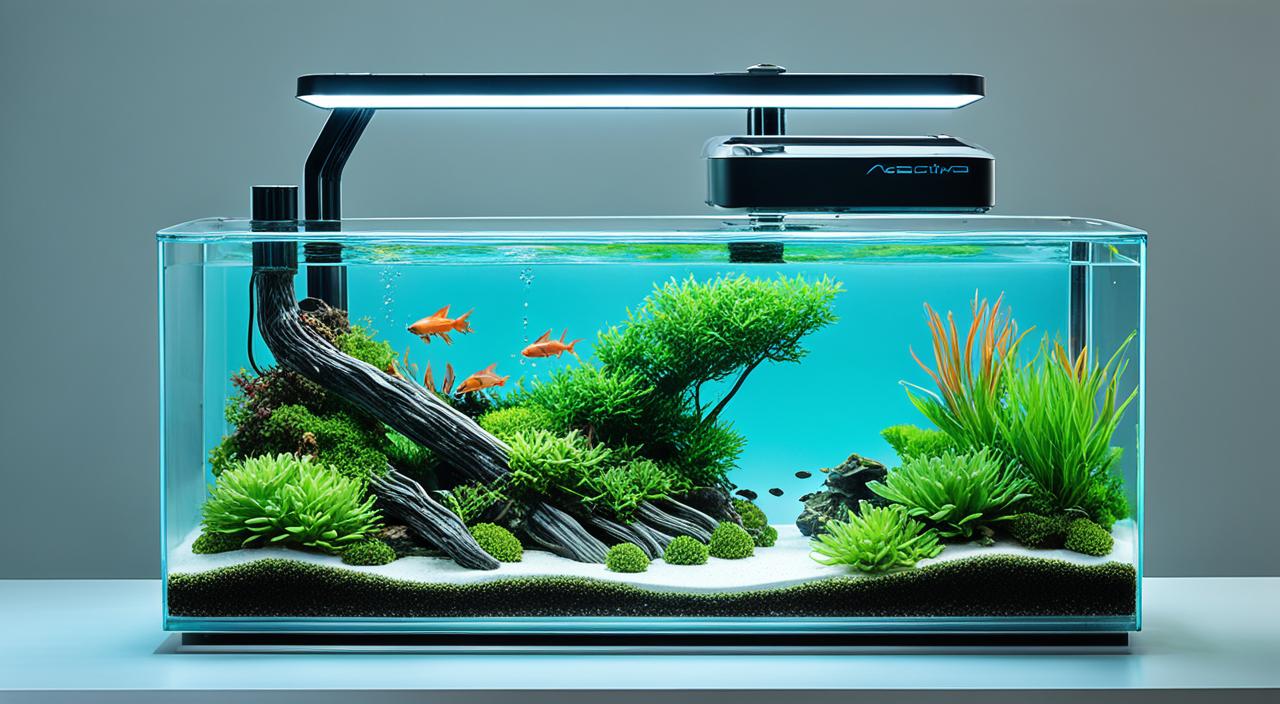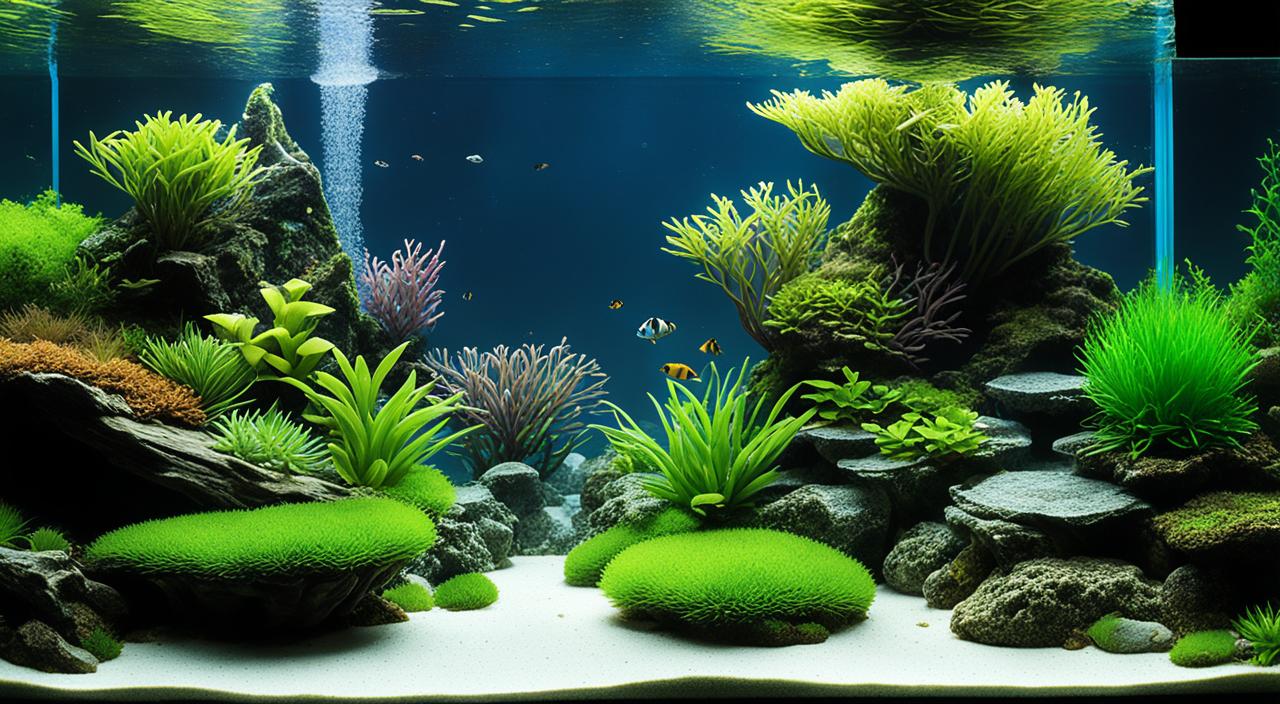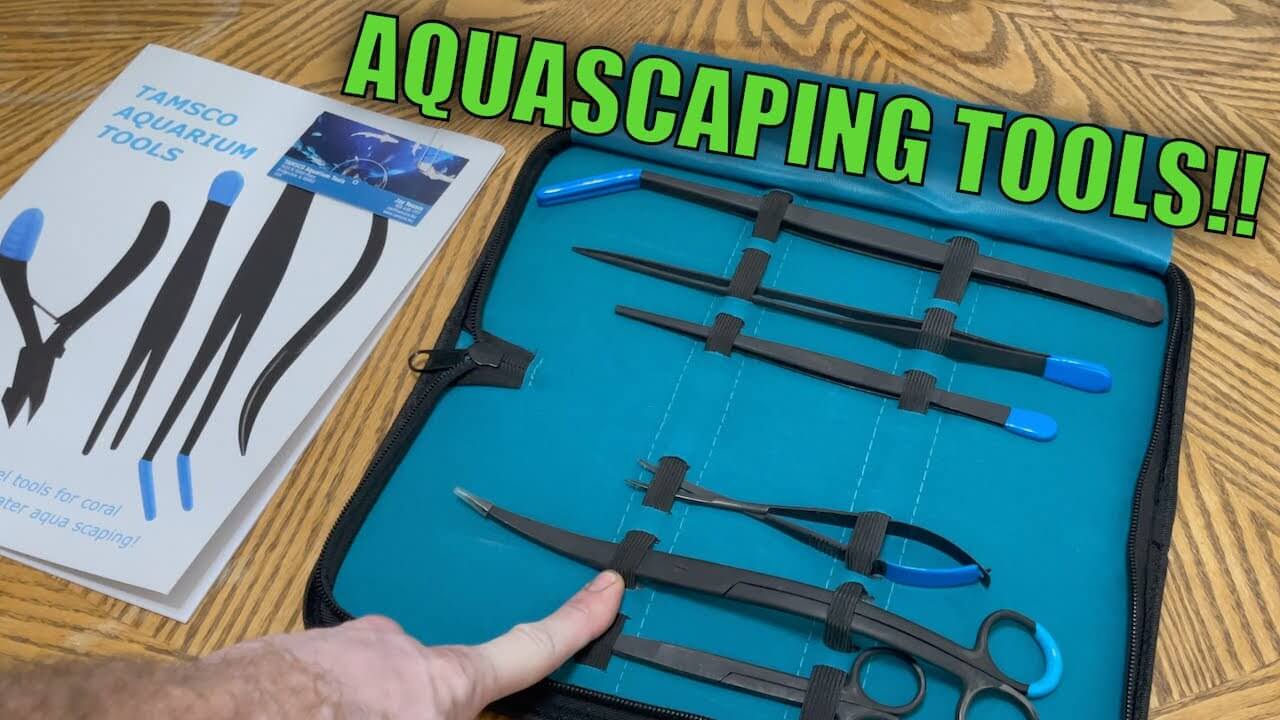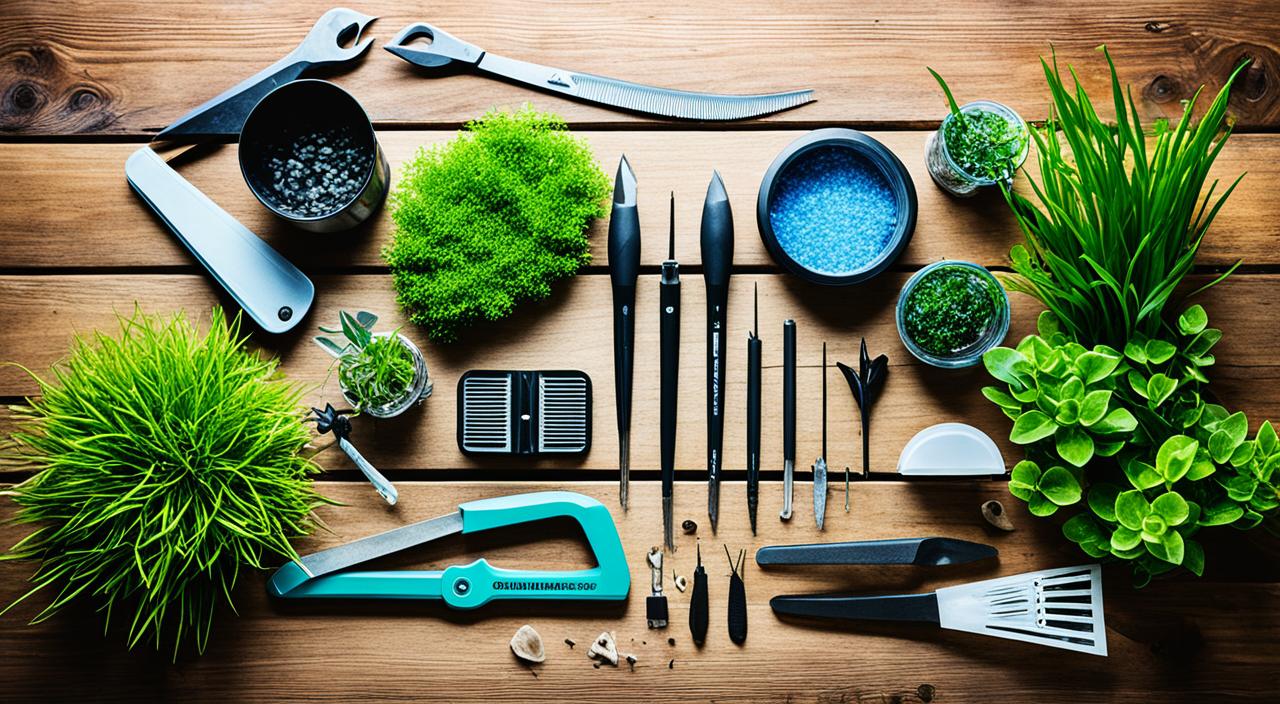Imagine diving into the world of aquascaping, where every detail matters and the beauty of your underwater garden hinges on the precision of your tools. As an aquascaper, I understand the passion and dedication that goes into creating stunning aquatic landscapes. However, amidst the excitement, many aquascapers overlook a hidden challenge – the art of tool maintenance.
Without proper tool maintenance, even the most skilled hands can falter. Neglecting this crucial aspect can dull your aquascaping dreams and hinder the full potential of your aquatic paradise. That’s why it’s essential to master the secrets of tool maintenance, ensuring the longevity and precision of your tools.
Key Takeaways:
- Aquascaping tool maintenance is crucial for achieving precision and longevity.
- Proper cleaning, sterilizing, sharpening, storage, and rust prevention are essential for tool maintenance.
- Neglecting tool maintenance can reduce tool performance and result in poor results in your aquascapes.
- Regular care and maintenance are necessary to keep your tools in optimal condition.
- Mastering tool maintenance unlocks the full potential of your aquascaping endeavours.
Transform your aquascape from good to great with the right tools. Learn how in our Essential Guide to Aquascaping Tools, your ultimate resource for building stunning underwater gardens.
- The Importance of Regular Aquascaping Tool Care
- Cleaning Aquascaping Tools for Optimal Performance
- Sterilizing Tools to Maintain a Healthy Aquascape
- Tool Maintenance: Keeping Your Aquascaping Tools Sharp
- Effective Aquascaping Tool Storage Solutions
- Preventing Rust and Corrosion on Aquascaping Tools
- Common Mistakes to Avoid
- Conclusion
- FAQ
- Source Links
The Importance of Regular Aquascaping Tool Care
Regular tool care plays a crucial role in maintaining the performance of your aquascaping tools. By providing proper care, you can ensure that your tools function optimally and deliver the precision necessary for creating intricate aquascapes. Neglecting tool care, on the other hand, can lead to reduced performance, damaged tools, and unsatisfactory results in your aquascapes. That’s why it’s essential to prioritize tool maintenance to enhance your aquascaping experience.
Regular care helps keep your tools in top condition, ensuring they perform at their best. It involves a series of activities that contribute to the longevity and functionality of your aquascaping tools. By practising regular tool care, you can prolong the lifespan of your tools and maintain their performance over time.
One key aspect of regular tool care is cleaning. Cleaning your tools removes dirt, debris, and other contaminants that can affect their performance. It also helps to prevent the buildup of harmful substances that could potentially harm your aquatic plants and animals. Cleaning your tools after each use keeps them hygienic and ensures they are ready for the next aquascaping project.
Another important part of tool care is maintenance. This involves inspecting your tools for wear and tear, checking their sharpness, and performing necessary adjustments or repairs. Regular maintenance helps to identify and address issues early on, preventing them from escalating and causing further damage to your tools.
Proper storage is also a crucial aspect of regular tool care. Storing your tools clean and organised ensures their protection and prevents them from being damaged or misplaced. Using appropriate storage containers and implementing protective measures can significantly extend the lifespan of your tools and maintain their performance for the long term.
By regularly caring for your aquascaping tools, you not only ensure their longevity but also enhance their performance. Well-maintained tools provide the precision and control to create stunning and intricate aquascapes. Regular tool care allows you to unleash your creativity and achieve the desired results in aquascaping.
Next, we will delve into the specifics of cleaning aquascaping tools to optimize their performance and longevity.
Cleaning Aquascaping Tools for Optimal Performance
Cleaning your aquascaping tools is essential for maintaining their performance and preventing the buildup of dirt, debris, and contaminants. By regularly cleaning your tools, you can ensure that they function optimally and continue to provide the precision required for creating stunning aquascapes.
Choosing the Right Cleaning Agents
When cleaning aquascaping tools, it’s crucial to choose suitable cleaning agents. Using harsh chemicals or abrasive substances can damage the tools and affect their performance. Instead, opt for gentle yet effective cleaning agents specifically formulated for cleaning delicate tools.
Step-by-Step Cleaning Process
To ensure thorough cleaning and hygiene, follow a step-by-step cleaning process for your aquascaping tools:
- Gently rinse the tools under running water to remove any loose debris.
- Apply the chosen cleaning agent to a soft cloth or sponge.
- Wipe down the tools, paying attention to all surfaces and crevices.
- Rinse the tools thoroughly to remove any residue.
- Dry the tools using a clean, lint-free cloth.
This step-by-step cleaning process will help remove dirt, algae, and other pollutants from your tools, leaving them clean and ready for use.
Drying and Polishing for Lasting Use
After cleaning your aquascaping tools, it’s essential to dry and polish them properly. Moisture can lead to rust and corrosion, damaging the tools over time. Use a clean, dry cloth to absorb excess moisture and thoroughly dry the tools.
Additionally, consider using a polishing cloth or a specialized tool polish to keep your tools in optimal condition. Polishing the tools enhances their appearance and creates a protective barrier that helps prevent rust and corrosion.
Following the recommended cleaning process and properly drying and polishing your aquascaping tools, you can maintain their performance, extend their lifespan, and ensure successful creations.
Sterilizing Tools to Maintain a Healthy Aquascape
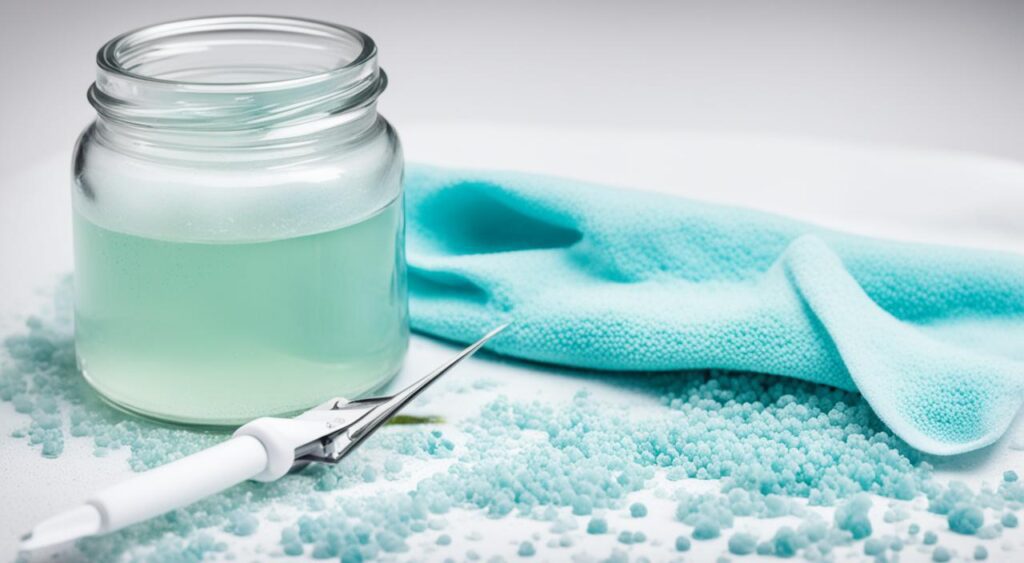
Sterilizing your aquascaping tools is crucial for maintaining a healthy aquascape. By eliminating harmful bacteria, viruses, and parasites, you can prevent the spread of diseases and ensure the well-being of your aquatic plants and animals. Proper tool sterilization is essential for creating a safe and thriving aquatic environment.
Effective sterilization methods and techniques are necessary to disinfect your tools thoroughly. There are several ways to sterilize your aquascaping tools, including:
- Using chemical sterilizing solutions
- Boiling the tools in water
- Using autoclaves or sterilization machines
- Using UV sterilizers
Each method has advantages and may be suitable for different types of tools. Following the manufacturer’s guidelines and recommendations for each sterilization method is essential to ensure optimal results.
Tip: When sterilizing your tools, always wear appropriate protective gear such as gloves and goggles to minimize the risk of exposure to chemicals or hot water.
Regular tool sterilization is essential to maintain tool hygiene. The frequency of sterilization will depend on the specific needs of your aquascape and the usage of your tools. Sterilising your tools before and after each use is recommended to prevent contamination and ensure maximum cleanliness.
Proper tool hygiene goes beyond sterilization. It is also crucial to clean and dry your tools thoroughly before sterilization, as sterilization alone may not remove all visible debris and contaminants. Regular cleaning, followed by sterilization, helps maintain your tools’ overall cleanliness and functionality.
By prioritizing tool sterilization and hygiene, you can ensure a healthy aquascape environment and promote the well-being of your aquatic plants and animals.
| Sterilization Method | Advantages | Disadvantages |
|---|---|---|
| Chemical sterilizing solutions | It may take longer for sterilization | It may require a longer exposure time |
| Boiling the tools in water | Simple and cost-effective | It may require a longer exposure time |
| Autoclaves or sterilization machines | Provides thorough sterilization | Requires specialized equipment |
| UV sterilizers | Environmentally friendly and chemical-free | May take longer for sterilization |
Tool Maintenance: Keeping Your Aquascaping Tools Sharp
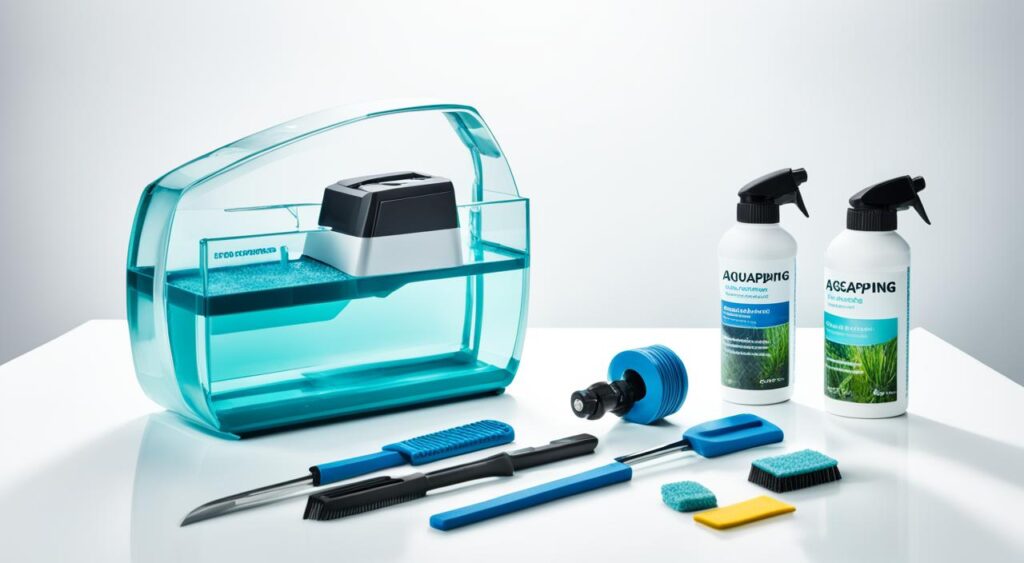
Maintaining the sharpness of your aquascaping tools is crucial for achieving precise cuts and detailed work in your aquascapes. Dull blades can result in ragged edges and make creating the desired aesthetic in your underwater landscapes challenging. This section will explore the importance of tool sharpness and how it directly affects your aquascaping results.
Understanding Blade Sharpness
Regarding aquascaping tools, different blades serve different purposes, such as trimming plants, shaping driftwood, or cutting through challenging materials. Each blade has a specific sharpness requirement to perform optimally. Maintaining the appropriate level of sharpness ensures smooth and effortless cuts, reducing the risk of damaging delicate aquatic plants or disrupting the layout of your aquascape.
Regularly inspect your aquascaping tool blades for signs of wear, such as dullness or nicks. If you notice a decrease in performance or the blade fails to make clean cuts, it’s time for sharpening or blade replacement.
Home Sharpening Techniques
For avid aquascapers who love taking a DIY approach, several home sharpening techniques can help restore the sharpness of your aquascaping tools. You can carefully sharpen the blades to regain their cutting edge by using sharpening stones, honing rods, or diamond files.
Following the manufacturer’s instructions and maintaining a consistent angle while sharpening is essential when using these techniques. It’s also advisable to practice on old or spare blades before sharpening your professional aquascaping tools.
Professional Sharpening Services
If you prefer a hands-off approach or your tools require professional attention, consider utilizing the services of expert sharpening technicians. Professional sharpening services specialize in restoring the sharpness of various tools while ensuring the highest level of precision.
These services use specialized equipment and techniques to return your aquascaping tools to their original sharpness, ensuring consistent and accurate cuts. Many professional sharpening services offer mail-in options, making it convenient for aquascapers to have their tools sharpened and returned without the hassle of visiting a physical location.
Before sending your tools for professional sharpening, clean them thoroughly and securely package them to prevent any damage during transit.
Effective Aquascaping Tool Storage Solutions
Proper storage of your aquascaping tools is essential for their longevity and protection. This section will discuss effective tool storage solutions to help you keep your tools organized and in good condition. By implementing these storage practices, you can extend the lifespan of your aquascaping tools and ensure they are easily accessible whenever you need them.
Selecting Proper Storage Containers
When it comes to storing your aquascaping tools, it’s essential to choose the proper storage containers. Look for durable, waterproof containers with compartments or dividers to keep your tools separate and organized. Opt for containers with secure lids or locks to prevent accidental spills and protect your tools. Consider investing in tool storage boxes or cases designed explicitly for aquascaping tools, as they often come with foam inserts that securely hold your tools in place.
Organizing Tools for Easy Accessibility
Organizing your tools is crucial for easy accessibility and efficient workflow in your aquascaping projects. Sort your tools based on their function or size and assign specific compartments or sections in your storage container for each category. This will allow you to quickly locate the necessary tool without rummaging through a cluttered container. Consider using labels or colour-coded stickers to streamline your organization system further.
Protective Measures to Prevent Tool Damage
In addition to proper storage and organization, it’s essential to take protective measures to prevent tool damage. Utilize tool holders, sheaths, or cases to provide individual protection for each tool, preventing them from rubbing against each other and causing nicks or scratches. If your tools have sharp edges, consider using blade guards or covers to protect them and prevent accidental cuts. Regularly inspect your tools for any signs of wear or damage, and address any issues promptly to ensure their continued functionality.
By selecting proper storage containers, organizing your tools, and implementing protective measures, you can maintain the condition and longevity of your aquascaping tools. Take the time to invest in effective tool storage solutions, and you will reap the benefits of having well-maintained tools that are ready to assist you in creating stunning aquascapes.
Preventing Rust and Corrosion on Aquascaping Tools
Rust and corrosion can significantly impact the performance and lifespan of your aquascaping tools. These issues can compromise the precision and functionality of your tools, making it essential to take preventive measures. Fortunately, there are several steps you can take to keep your tools rust-free and corrosion-resistant.
One of the critical causes of rust and corrosion is exposure to moisture. When water or humidity comes into contact with the metal surfaces of your tools, it can lead to the formation of rust. Drying your tools thoroughly after each use is crucial to prevent this. Use a clean cloth to remove any moisture and ensure they are scorched before storing them.
Another effective preventive measure is to apply a thin layer of oil or lubricant to your tools. This creates a protective barrier that helps to repel moisture and prevent rust formation. Be sure to choose a rust-preventive oil or lubricant specifically designed for tools. Apply a small amount to the metal surfaces and use a clean cloth to spread it evenly. This process should be repeated regularly, especially in a high-humidity environment.
Additionally, proper storage is crucial for preventing rust and corrosion. Make sure to store your aquascaping tools in a dry and well-ventilated area. Avoid storing them in damp or humid environments, such as near water sources or poorly insulated spaces. Airtight containers or toolboxes can also provide an extra layer of protection against moisture and humidity.
Regular maintenance and cleaning are also vital to prevent rust and corrosion. After each use, clean your tools thoroughly and remove any dirt or debris that may have accumulated. Use a mild detergent or tool cleaner and a soft brush to scrub the surfaces gently. Rinse them with clean water and dry them thoroughly before storing them. Regular cleaning not only helps to prevent rust and corrosion but also keeps your tools in optimal condition.
By implementing these preventive measures and incorporating them into your regular tool maintenance routine, you can ensure that your aquascaping tools remain in excellent condition. Preventing rust and corrosion will not only prolong the lifespan of your tools but also ensure their reliable performance, allowing you to create beautiful and precise aquascapes.
Common Mistakes to Avoid
To properly care for and maintain your aquascaping tools, it is essential to be aware of common mistakes that aquascapers often make. By avoiding these mistakes, you can ensure the longevity of your tools and achieve the best results in your aquascaping projects.
“The only real mistake is the one from which we learn nothing.” – Henry Ford
Here are some insights and tips on how to avoid aquascaping tool maintenance mistakes:
- Not cleaning tools after each use: Failing to clean your tools after each use can lead to the buildup of dirt, debris, and contaminants, affecting their performance and lifespan. Always thoroughly clean your tools using the appropriate cleaning agents and follow a step-by-step process.
- Using the wrong cleaning agents: Using harsh cleaners or solutions unsuitable for your aquascaping tools can cause damage and corrosion. Choose cleaning agents designed explicitly for aquascaping tools to ensure proper maintenance without compromising integrity.
- Not drying and polishing tools: Moisture left on your tools can lead to rust and corrosion. After cleaning, dry your tools thoroughly and polish them to maintain their shine and prevent any potential damage.
- Skipping tool sterilization: Neglecting to sterilize your tools can spread diseases and infections in your aquascape. It is important to sterilize your tools using the appropriate techniques and methods to ensure a healthy environment for your aquatic plants and animals.
- Ignoring tool sharpening: Maintaining the sharpness of your tools is crucial for achieving precise cuts and intricate details in your aquascapes. Regularly sharpen your tools using suitable techniques or seek professional sharpening services.
- Improper tool storage: Storing your tools haphazardly or without proper protective measures can lead to damage and loss of functionality. Select appropriate storage containers, organize your tools for easy accessibility, and use protective measures such as tool holders or cases.
- Not preventing rust and corrosion: Rust and corrosion can seriously impact the performance and lifespan of your aquascaping tools. Take preventive measures such as using rust-resistant materials, keeping tools dry, and implementing rust prevention methods to ensure longevity.
By being aware of these common mistakes and implementing the recommended tips, you can avoid unnecessary damage to your tools and maximize their lifespan for a successful aquascaping journey.
| Mistake | Effect | Prevention |
|---|---|---|
| Not cleaning tools after each use | The buildup of dirt, debris, and contaminants | Clean tools thoroughly using appropriate cleaning agents |
| Using the wrong cleaning agents | Damage and corrosion | Choose cleaning agents specifically designed for aquascaping tools |
| Not drying and polishing tools | Rust and corrosion | Dry tools thoroughly and polish them after cleaning |
| Skipping tool sterilization | Spread of diseases and infections | Sterilize tools using appropriate methods |
| Ignoring tool sharpening | Reduced precision and performance | Regularly sharpen tools or seek professional sharpening services |
| Improper tool storage | Damage and loss of functionality | Select appropriate storage containers and use protective measures |
| Not preventing rust and corrosion | Reduced lifespan and performance | Implement rust prevention methods and keep tools dry |
Conclusion
Throughout this article, we have explored the crucial aspects of aquascaping tool maintenance to ensure the longevity and precision of your tools. Regular tool care, including cleaning, sterilization, sharpening, storage, and rust prevention, is essential for achieving stunning results in your aquascapes. By implementing these maintenance practices, you can keep your tools in optimal condition and enhance their performance.
Proper cleaning of your aquascaping tools helps remove dirt, debris, and contaminants, preventing any buildup that could affect their performance. Choosing the right cleaning agents and following a step-by-step process ensures thorough cleaning and hygiene. Additionally, drying and polishing your tools after cleaning helps prevent rust and corrosion, extending their lifespan.
Sterilizing your tools is crucial for maintaining a healthy aquascape and preventing the spread of diseases to your aquatic plants and animals. We have discussed various methods and techniques for effective sterilization, emphasizing the importance of regular sterilization to ensure tool hygiene.
Keeping your aquascaping tools sharp is vital for achieving precision and detailed work. Understanding blade sharpness requirements, utilizing home sharpening techniques, or seeking professional sharpening services will help maintain the sharpness of your tools, ensuring outstanding aquascaping results.
Effective tool storage solutions, such as selecting proper storage containers and organizing tools for easy accessibility, play a significant role in maintaining the longevity of your tools. Additionally, taking protective measures like using tool holders, sheaths, or cases helps prevent tool damage and ensures their long-lasting use.
Finally, we have discussed common mistakes to avoid in aquascaping tool maintenance. By being aware of these mistakes and implementing the correct maintenance practices, you can ensure your tools are properly cared for and perform exceptionally in your aquascapes.
In conclusion, by prioritizing regular tool care, cleaning, sterilization, sharpening, storage, and rust prevention, you can ensure the longevity and precision of your aquascaping tools. Implement these maintenance practices to achieve stunning and captivating aquatic creations in your aquascapes.
FAQ
Why is regular tool care important in aquascaping?
Regular tool care is important in aquascaping because it ensures that your tools function optimally and provide the precision required for creating intricate aquascapes. Neglecting tool care can lead to reduced performance, damaged tools, and poor results in your aquascapes.
How often should I clean my aquascaping tools?
It is recommended to clean your aquascaping tools after each use to maintain their performance and prevent the buildup of dirt, debris, and contaminants.
What cleaning agents should I use for my aquascaping tools?
When cleaning your aquascaping tools, choose gentle, non-abrasive cleaning agents such as dish soap or aquarium-safe cleaners. Avoid using harsh chemicals that can damage the tools or harm your aquatic plants and animals.
What is the correct way to clean aquascaping tools?
To clean aquascaping tools, rinse them thoroughly with water to remove any loose debris. Then, soak the tools in a diluted cleaning solution, scrub them gently with a soft brush, and rinse again. Finally, dry the tools thoroughly and polish them to prevent rust and corrosion.
How often should I sterilize my aquascaping tools?
It is recommended to sterilize your aquascaping tools before each use to maintain a healthy aquascape. This helps eliminate harmful bacteria, viruses, and parasites, preventing the spread of diseases and ensuring the well-being of your aquatic plants and animals.
What are some effective methods for sterilizing aquascaping tools?
There are several methods for sterilizing aquascaping tools, including boiling, using bleach or hydrogen peroxide solutions, or using an autoclave. Choose the method that suits your tools and preferences, and follow the instructions carefully to ensure effective sterilization.
How can I maintain the sharpness of my aquascaping tools?
To maintain the sharpness of your aquascaping tools, avoid using them on hard surfaces, store them properly to prevent damage, and regularly sharpen them using appropriate sharpening techniques or seek professional sharpening services.
What are some effective storage solutions for aquascaping tools?
Proper storage of aquascaping tools is important for their longevity and protection. Use storage containers specifically designed for tools, organize them for easy accessibility, and consider protective measures such as using tool holders, sheaths, or cases.
How can I prevent rust and corrosion on my aquascaping tools?
To prevent rust and corrosion on aquascaping tools, always dry them thoroughly after cleaning, store them in a dry environment, and consider applying a rust preventive coating or using silica gel packs to absorb moisture.
What are some common mistakes to avoid in aquascaping tool maintenance?
Common mistakes to avoid in aquascaping tool maintenance include neglecting cleaning and sterilization, using harsh cleaning agents, storing tools in damp environments, and neglecting regular sharpening and maintenance.

